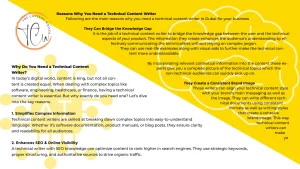Did you know that over 5 million searches happen on Google every minute?
That’s a huge potential traffic for your website. But how do you make sure that your blog content shows up on the first page of Google and attracts the right audience?
SEO content writing is the answer.
It is the art and science of creating content that is optimized for search engines and users. It involves researching and using relevant keywords, structuring and formatting the content, ensuring content quality, and applying technical SEO best practices.
The goal of SEO content writing is to rank higher and drive more organic traffic to your blog.
But how do you write SEO-friendly blog posts in 2024? How do you measure and improve your SEO content writing performance? This blog explains all this and more. We’ll start with the factors that affect blog SEO and then, we’ll take a deep dive into:
- Keyword research
- Content structure
- Content quality
- Technical SEO
By the end, you will have a clear understanding of how to write blog content that ranks well on Google. So, let’s get started.
Table of Contents
How to Find Keyword Ideas and Metrics
How to Evaluate and Prioritize Keywords
How to Use Keywords in Your Content
How to Choose the Right Content Structure
How to Write Insightful Content
How to Secure Your Website with HTTPS
How to Make Your Website Mobile-Friendly
Factors That Affect Blog SEO
The following are some general factors that Google and other search engines use to rank blog content:
- Dwell time: The amount of time that a user spends on your blog page after clicking on it from the search results. Dwell time indicates user engagement and satisfaction with your content.
- Page speed: The speed at which your blog page loads and responds to user interactions. Page speed affects the user experience and satisfaction, as well as the SEO ranking and performance.
- Mobile responsiveness: The ability of your blog page to adapt and perform well on mobile devices, such as smartphones and tablets. You want to make your page mobile-friendly, as it can increase your reach and audience.
- Index date: The date when Google first crawled and indexed your blog page. Index date affects the freshness and relevance of your content. Update your index date, as it can help you rank for new and trending keywords.
- Keyword stuffing: The practice of using the same keyword too many times in your content, or using irrelevant keywords that are not related to your topic. Keyword stuffing can harm your SEO and user experience, as it can make your content look unnatural and spammy.
- Image SEO: Image SEO involves using relevant and descriptive file names, alt texts, captions, and titles for your images. Image SEO can help you improve your content relevance and authority, as well as your SEO ranking and performance.
Keyword Research
Search engines use keywords to understand the topic and intent of your content. Therefore, keywords are one of, if not the most important part of SEO content writing.
Keyword research is the process of finding and analyzing the best keywords for your content. It helps you to:
- Find the most relevant and profitable topics for your blog
- Optimize your content for the keywords that users search for
- Rank higher and drive more organic traffic to your blog
- Get a better rank than your rivals for a competitive edge
How to Find Keyword Ideas and Metrics
- Use Google Keyword Planner to find keyword ideas and metrics.
It is free and helps you discover new keywords, get search volume and competition data, and plan your SEO strategy. You need a Google Ads account for this.
- Use Ahrefs to find keyword opportunities and insights.
Ahrefs has a feature called Keywords Explorer that lets you find thousands of keyword ideas, along with their metrics, such as search volume, difficulty, clicks, and trends.
- Use SEMrush to find keyword gaps and suggestions.
SEMrush has a feature called Keyword Gap that lets you compare your keywords with your competitors and find the keywords that you are missing or can improve on.
How to Evaluate and Prioritize Keywords
Once you have a list of potential keywords for your content, you need to evaluate and prioritize them based on their metrics. Some of the most important keyword metrics are:
- Search volume: The number of times a keyword is searched in a specific time. Target keywords with high search volume, as they can bring more traffic to your blog.
- Difficulty: The level of competition or difficulty in ranking for a keyword. Find keywords with low to medium difficulty, as they are easier to rank for.
- Click-through rate (CTR): The percentage of users who click on the search results for a keyword. Search keywords with high CTR to bring more qualified traffic to your blog.
How to Use Keywords in Your Content
Finding the best keywords is not enough. You also need to use them effectively in your content. Here are two tips on how to use keywords in your content:
- Use keyword variations, synonyms, and related terms to create natural and diverse content.
- Use long-tail keywords and question-based keywords to target specific and conversational queries.
Content Structure
Content structure is the way you organize your content into a clear and logical format that follows the best SEO practices and also follows Google’s 2023 helpful content update. Content structure helps you to:
- Give a better user experience and readability for your readers
- Improve your content relevance and authority for search engines
- Increase your content visibility and ranking for your target keywords
- Boost your content engagement and retention for your audience
How to Choose the Right Content Structure
There are many types of content structures that you can use, such as listicles, how-to guides, case studies, reviews, etc. Each type of content structure has its own advantages and disadvantages, depending on your content goals and needs.
- Listicles:
- Organized into a list of items
- Great for creating catchy and scannable content
- Easy to write and read
- Ideal for topics that can be broken down into multiple subtopics, tips, steps, examples, etc.
- Organized into a list of items
- How-to guides:
- Gives step-by-step instructions on how to do a task
- Great for creating informative and helpful content
- Effective for building trust and authority
- Ideal for topics that involve a process, a method, a technique, a skill, etc.
- Gives step-by-step instructions on how to do a task
- Case studies:
- Present a real-life example or story of how something was done or achieved
- Great for creating persuasive and engaging content
- Powerful for demonstrating the value and results of your products, services, or solutions
- Ideal for topics that involve a challenge, a solution, and an outcome, such as a success story, a testimonial, or a review.
- Present a real-life example or story of how something was done or achieved
- Reviews:
- Provide an evaluation or opinion on a product, service, or topic
- Great for creating honest and unbiased content
- Useful for generating leads and conversions
- Ideal for topics that involve a comparison, a rating, a recommendation, or feedback, such as a product review, a service review, or a book review.
- Provide an evaluation or opinion on a product, service, or topic
How to Format Your Content
The second step to structure your content is to format content using headings, subheadings, bullet points, and paragraphs. Formatting your content helps you to:
- Break up your content into smaller and manageable chunks that are easier to read and scan
- Highlight the main points and subpoints of your content that are relevant and important
- Create a clear and coherent flow of your content that guides the reader from the beginning to the end
- Enhance the visual appeal and accessibility of your content that attracts and retains the reader’s interest
Here’s how you can format your content:
- Use headings and subheadings to categorize your blog into sections and subsections
Search engines use these to understand the structure and hierarchy of your content. Therefore, you need to use headings and subheadings correctly and consistently, following the HTML heading tags, such as H1, H2, H3, etc.
Generally, you should use only one H1 tag for the main title of your content, and use H2, H3, and H4 tags for the subheadings of your content, depending on the level of detail and complexity.
You should also use your target keywords and modifiers in your headings and subheadings, to make them descriptive and catchy.
- Use bullet points and paragraphs to break up your content into smaller and manageable chunks
Bullet points are ideal for listing items, such as tips, steps, examples, etc. Paragraphs are ideal for explaining concepts, providing details, adding context, etc.
Generally, you should use bullet points when you have three or more items that are related and parallel, and use paragraphs when you have one or two items that are complex and require elaboration.
You should also use transitions, connectors, and signposts to create a smooth and coherent flow of your content, such as “first”, “second”, “third”, “however”, “therefore”, “in conclusion”, etc.
Content Quality
Content quality is the degree to which your content is original, insightful, or interesting, as per Google’s Helpful Content guidelines. It helps you to:
- Provide value and satisfaction to your readers
- Build trust with your audience and authority with search engines
- Increase your content engagement and retention
- Reduce your content bounce rate and improve your SEO ranking
You need to write high-quality content that is original, insightful, or interesting. Here’s how:
How to Write Original Content
Original content is unique, fresh, and not copied or duplicated from other sources. It helps you to:
- Avoid plagiarism and its consequences, such as legal issues, reputation damage, and SEO penalties
- Stand out from your competitors
- Showcase your creativity and personality
- Attract and retain loyal readers
To write original content:
- Don’t copy or paraphrase someone else’s content without giving proper credit and citation. Use quotation marks when you mention someone else’s words word-for-word.
- Do your research to find data, statistics, facts, and examples to support your content. Give proper credit and citations if you have to use third-party data.
- Try to use your own images, videos, infographics, and other visual elements to enhance your content. Don’t use someone else’s images, videos, infographics, and other visual elements without giving proper credit and citation.
How to Write Insightful Content
Insightful content is informative, helpful, or valuable to your readers. To write insightful content:
- Use keyword research and customer feedback to find out what your reader is looking for, what their pain points are, and what their goals are.
- Use data, statistics, facts, and examples to support your content and add credibility and authority. Use tools like Statista, Google Trends, and Pew Research Center to find reliable and relevant data, statistics, facts, and examples for your content.
Technical SEO
Technical SEO is the process of optimizing the technical aspects of your website for search engines and users. Your brand needs it to:
- Ensure that the website is secure, fast, and easy to crawl and index by search engines
- Improve the website’s usability, accessibility, and compatibility across different devices and browsers
- Enhance the website’s appearance and functionality in search results and social media platforms
How to Secure Your Website with HTTPS
HTTPS is a protocol that secures the data exchanged between your website and the user’s browser. HTTPS protects your website and user’s data, builds trust and credibility, and boosts your SEO ranking.
To secure your website with HTTPS:
- Get an SSL certificate from a trusted provider. An SSL certificate is a digital document that verifies your website’s identity and enables HTTPS encryption.
- Install and activate the SSL certificate on your web server, following the instructions provided by your provider or web host.
- Use 301 permanent redirects to redirect all HTTP requests to HTTPS. This will ensure that your users and search engines always access your website via HTTPS, and avoid any duplicate content issues.
- Update all links, images, scripts, and resources to use HTTPS URLs. This will prevent any mixed content errors, which occur when your website loads both HTTPS and HTTP resources and can affect your SEO and user experience.
How to Speed Up Your Website
- Use Google PageSpeed Insights to measure and improve your website speed.
- Use a content delivery network (CDN) to deliver your website’s content faster and more efficiently.
- Optimize your images, videos, and other media files for the web by reducing their size, quality, and format
How to Make Your Website Mobile-Friendly
- Use Google Mobile-Friendly Test to check and improve your website’s mobile-friendliness.
- Use responsive web design to create a website that adapts to different screen sizes and orientations.
- Use Accelerated Mobile Pages (AMP) to create fast and lightweight web pages for mobile devices.
To Sum Up
Optimizing your blog content for search engines goes hand-in-hand with your brand’s content strategy.
SEO blog optimization is not a one-time thing. It is an ongoing process that requires regular updates, audits, and analysis. It also requires technical skills, especially for the technical SEO part. While some of the tips mentioned here are easy to do, some require technical expertise and experience.
That’s why it is always a good practice to hire a content writing agency to write blogs for your brand. If you are looking for a content writing agency that can help you with SEO content and SEO blog optimization, The Content Writer is here for you.
We’re a leading content writing agency in Dubai that specializes in SEO content and SEO blog optimization. We have a team of professional content writers, editors, and SEO experts, who can create high-quality content for your blog, website, or social media. We also help you with content strategy, content distribution, and content analysis.




